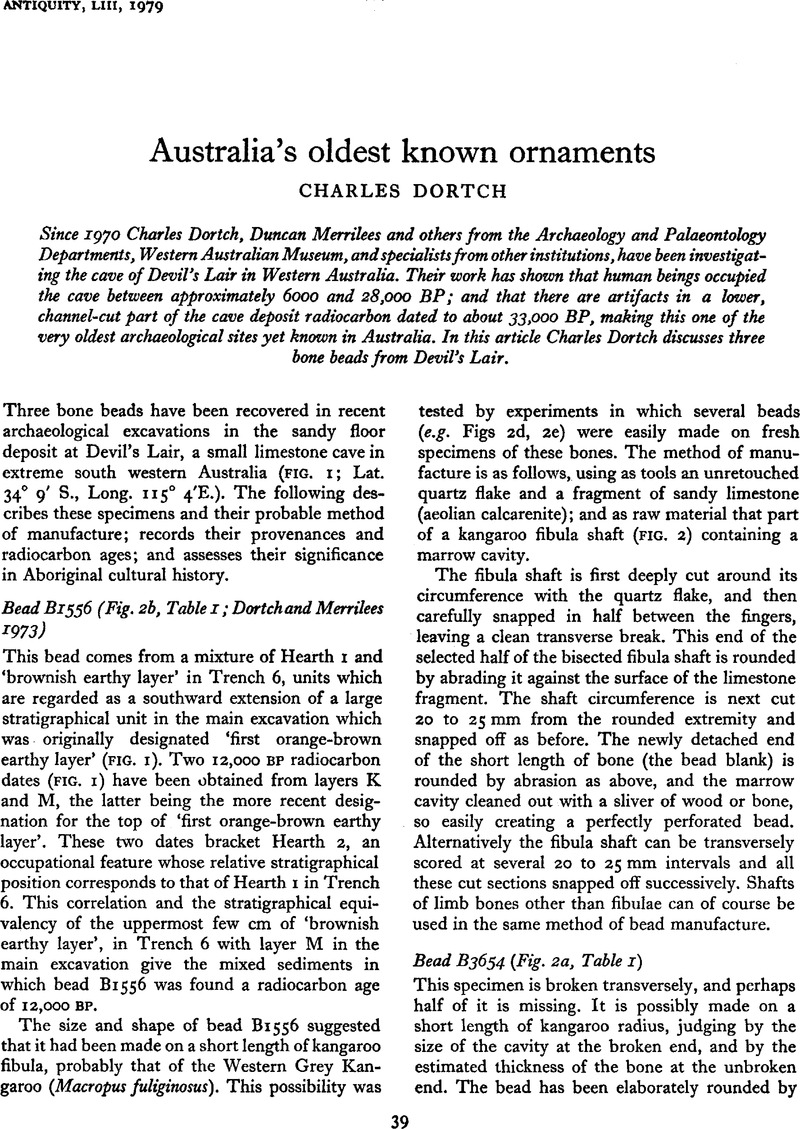Crossref Citations
This article has been cited by the following publications. This list is generated based on data provided by Crossref.
Bahn, Paul G.
1991.
Pleistocene Images outside Europe..
Proceedings of the Prehistoric Society,
Vol. 57,
Issue. 01,
p.
91.
Morse, Kate
1993.
Shell beads from Mandu Mandu Creek rock-shelter, Cape Range peninsula, Western Australia, dated before 30,000 b.p..
Antiquity,
Vol. 67,
Issue. 257,
p.
877.
Harris, David R.
1994.
Pathways to World Prehistory Presidential Address 1994.
Proceedings of the Prehistoric Society,
Vol. 60,
Issue. 1,
p.
1.
Dortch, C.E.
and
Dortch, Joe
1996.
Review of Devil’s Lair artefact classification and radiocarbon chronology.
Australian Archaeology,
Vol. 43,
Issue. 1,
p.
28.
Balme, Jane
and
Morse, Kate
2006.
Shell beads and social behaviour in Pleistocene Australia.
Antiquity,
Vol. 80,
Issue. 310,
p.
799.
Habgood, Phillip J.
and
Franklin, Natalie R.
2008.
The revolution that didn't arrive: A review of Pleistocene Sahul.
Journal of Human Evolution,
Vol. 55,
Issue. 2,
p.
187.
Langley, Michelle C.
2018.
Establishing a typology for Australian pointed bone implements.
Australian Archaeology,
Vol. 84,
Issue. 2,
p.
164.
Langley, Michelle C.
Clarkson, Chris
and
Ulm, Sean
2019.
Symbolic expression in Pleistocene Sahul, Sunda, and Wallacea.
Quaternary Science Reviews,
Vol. 221,
Issue. ,
p.
105883.



